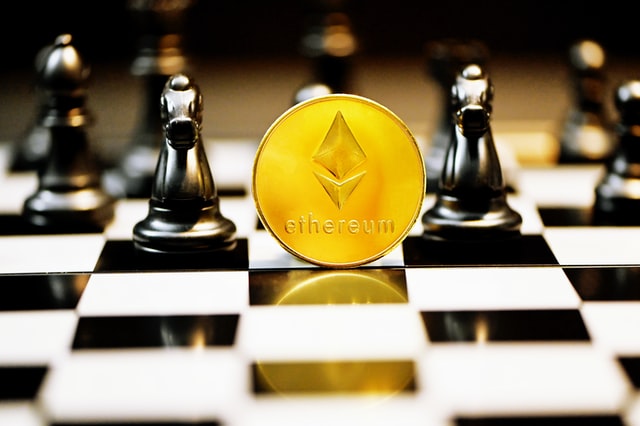In 2021, Ethereum had one of its most successful years while at the same time reaching platform limitations leading to the surprising rise of alternative layer 1 smart contract platforms. What can be expected from Ethereum and its competitors for 2022?
Crypto market capitalisation grew from $759bn to a whooping $2.2tr in 2021, a total return of +187.5% largely fuelled by meme, gaming/ metaverse tokens, as well as alternative layer 1 smart contract platforms. Ether’s 400% performance is remarkable, but compared with some of the competing layer 1 smart contract platforms (e.g. SOL +11’177.8%, LUNA +12’967.3%), Ethereum is left in the dust. The blockchain is at the center of the increased DeFi adoption, NFT craze and surge of DAOs, but at the same time fell victim to its own success hitting twice all-time-high costs of transactions in 2021. These conditions led to multiple projects leaving Ethereum for alternative platforms. At the same time, scaling solutions have been a rising topic in the crypto world as adoption increases and some of the prominent blockchains appear to struggle to keep pace.
What upgrades to expect for the top layer 1 platforms in 2022?
In the past weeks, layer 1 platforms provided an outlook for the upcoming year, often revealing plans to increase transactions per second (TPS), which ultimately leads to increased scalability:
Ethereum (~15 TPS): On the roadmap for 2022 is the merge of the Ethereum Mainnet with the Beacon Chain and the transition to the much anticipated Proof-of-Work consensus mechanism. According to sources, this upgrade will not solve scalability challenges right away, but rather paves the way for sharding.
Binance Smart Chain (BSC, ~73 TPS): BSC faced similar network congestion issues as Ethereum in 2021. The platform is characterised by large block sizes, causing some issues with the validator network and requiring work on the requirements. Part of the roadmap for 2022 includes also an extension to cross-chain and multi-chain, but no further information on TPS impact could be found.
Cardano (~7 TPS): Cardano’s development team plans to introduce sharding and sidechains towards the end of 2022 in its Basho era. After the update, Cardano will hypothetically be able to process 257 TPS and each sidechain ~1’000 TPS on top.
Other noteworthy layer 1 platforms include Solana (~3k TPS) and Terra (~4 TPS), but their development teams might be focused on other areas of developments for 2022. Solana is facing several network performance issues since inception which could be ascribed to the prioritisation of scalability over security and decentralisation. Terra on the other hand, is focusing on building its ecosystem with 160+ projects expected to launch in 2022.
Conclusion
The 2022 outlook of the top layer 1 platforms revealed that competition will continue to thrive. Ethereum upgrades do not seem to indicate a large leap in terms of scalability and only in 2023 can significant improvement be expected. As a consequence, Ethereum’s competitors will have ample time to solidify their market positions. If Cardano can deliver on its upgrades, the blockchain could stand in a favourable position towards end of the year with one of the highest TPS and a robust blockchain in terms of security. Solana continues to be interesting to follow and its superiority in terms of transaction capacity is compelling, if developers are able to solve the security issues. In the past we have seen several instances of delayed updates to the platforms and therefore these plans need to be read with caution. The crypto market is ever-evolving and fast-paced, making it hard to determine which layer 1 platform will be leading the fray end of this year.
